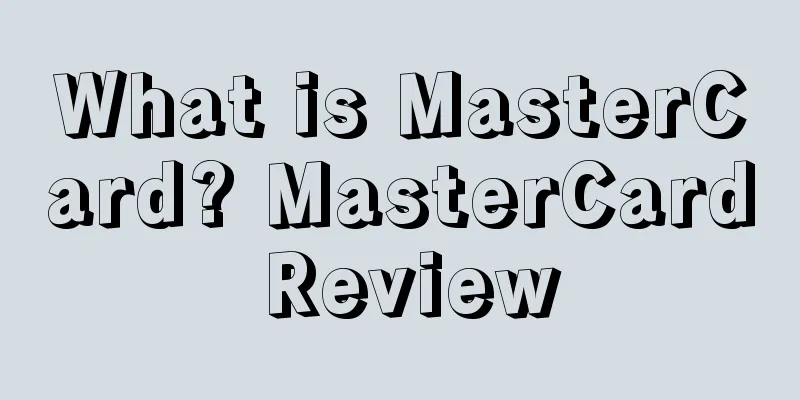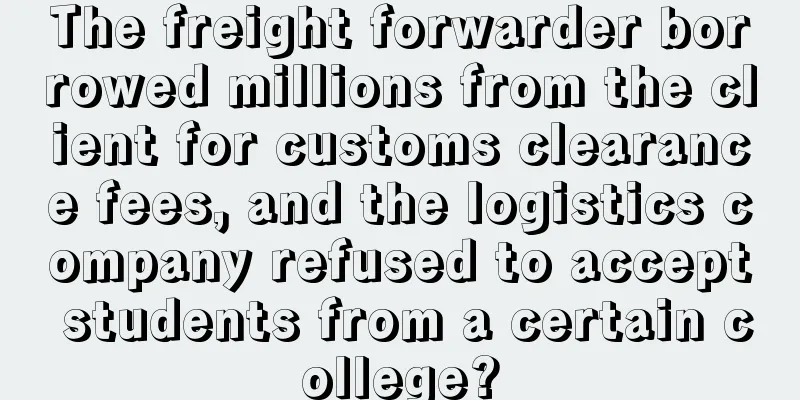What is MasterCard? MasterCard Review

|
MasterCard was founded in 1966 and its global headquarters is located in New York, eastern United States. As the world's leading payment company, MasterCard is committed to providing a more convenient and efficient financial payment environment for consumers around the world. Through payment franchising, processing centers and consulting services for the payment industry, MasterCard provides leading global business links for global financial institutions, governments, businesses, merchants and cardholders. With its MasterCard®, MaesTRO®, Cirrus® brands, credit cards, debit cards and prepaid cards as core products, and innovative multifunctional platforms such as MasterCard PayPass™ and MasterCard inControl™, MasterCard continues to promote global commerce and provide services to consumers, governments and merchants in more than 210 countries and regions. In the late 1950s and early 1960s, American financial institutions created an internationally accepted credit card system, which soon became popular around the world. In 1966, some banks formed an organization called the Interbank Card Association. In 1969, the Interbank Card Association purchased the patent rights of MasterCharge and unified the names and designs of credit cards of various issuing banks. In the following decade, the original name of MasterCharge was changed to MasterCard. MasterCard entered China in 1988, becoming the first international payment company to enter China. Currently, all major commercial banks in China are members of MasterCard. For more than 20 years, MasterCard International has played an indelible role in helping China's bank card industry from its inception to its development. Most of the credit cards of Chinese member banks use the MasterCard brand. MasterCard is also the first international organization to realize global networking business in China, creating a large amount of foreign exchange income for the country and creating various business opportunities and lucrative profits for member banks and merchants. Development History Technology has played a major role in MasterCard's global growth. Initially, authorization between issuing banks and acquiring banks was done over the phone. 1973 The interbank authorization system INAS began to operate, basically eliminating the telephone authorization method. The next year, all credit cards adopted the standard magnetic stripe style, which was a major technological advancement. The opening of the interbank electronic funds transfer network in 1975 automated the processing of clearing and settlement, and from then on, the accepting bank no longer needed to mail the bill to the issuing bank. 1983 MasterCard was the first to introduce the use of laser holography on cards to prevent counterfeiting, thereby minimizing fraud losses to member banks. In the same year, it launched the Emergency Credit Card Replacement (ECR) program. 1984 It is a milestone in the development of MasterCard technology. The global transaction processing network Banknet was put into operation. The INET system was able to operate on this network, and INAS used this network to conduct equal authorization (PTP) between member banks. In 1984, the MasterCard automatic point of sale (POS) program reached a fully operational level in the United States, which further supported the MasterCard POS business. 1987 The Banknet system began to install international outlets to provide member units with a full range of international services, laying the foundation for the next step in the development of international business. In the same year, the electronic image system was launched in the United States, which transmits images of sales documents between member banks through Banknet. In 1990, this business was promoted to international business. In order to support the development of the expedited business market, MasterCard developed the MasterCard Card Processing System (MCCPS) in 1989, which enables member banks outside the United States to use microcomputers to accelerate the issuance and acceptance of credit cards at a low cost. This microcomputer can provide a package of "back office" transactions and networking with POS and ATM. 1990s MasterCard developed the Member Bank Protection Program (MPP), which reduces fraud losses of member banks by 50 million US dollars each year. In order to solve communication barriers, MasterCard also developed the satellite communication system MSAT, which was installed in Latin America in 1992 and in India in 1996. In 1994, Anknet established packet switching centers in Bahrain and France, and processing centers in Australia and China. In 1996, MasterCard launched the Japanese network service in Japan and operated the MasterNet credit card network system in Japan. This system connects the merchant's shipping place with a separate processing center, which reduces the authorization time by 60%, making cardholders feel smoother than ever when using POS to swipe their cards. 1995 MasterCard OnLine debuts. It is a global information delivery tool that enables member banks to access and retrieve MasterCard information products and services from their desktop computers. Two modules, MasterCard Market Advisor and MasterCard Match, are developed for the first time on this platform. The former is a decision support system for co-branded cards, while the latter provides accepting banks with online inquiries to a database of 50,000 merchants around the world that have been withdrawn by the accepting bank due to risk or other reasons. After the promotion of the use of the MasterCard Priority Card Connection System, emergency replacement of MasterCard cards can be completed the day after application in the United States, and within two working days in other parts of the world. At the same time, the cost of replacement procedures has been reduced by 75%. In order to improve the quality of global customer service, MasterCard launched MasterCard Global Services in 1996, which provides cardholders with emergency replacement card services in local languages of various countries, 24 hours a day, 365 days a year. 1996 MasterCard and National Data Corporation (NDC) have formed GPS, the world's largest payment processing company. NDC is a well-known American company that provides value-added application systems and services. It specializes in providing GPS, which includes the indirect payment services and data exchange services of the former MAPP organization and NDC. Two more milestones in the history of MasterCard's technological development have occurred. In November, the new Banknet Virtual Private Network (VPN) had its first member, MasterCard. It was successfully transplanted and certified. This network was designed and built based on AT&T's solution. From 1997 to 1998, VPN will replace the existing data network, making MasterCard's credit and debit card transactions faster and more reliable. In December 1996, MasterCard, in conjunction with IBM and DPS, optimized electronic commerce using the first end-to-end secure Internet transaction. The Secure Electronic Transaction Protocol (SET) was used here to make online payment card transactions more secure. By the end of 1997, MasterCard and its member banks in Denmark, France, Japan, South Korea, Malaysia, South Africa, Taiwan and the United States had participated in the project. Nearly 60 SET pilot systems had been established. The continuous advancement of technology has become a strong driving force for the development of MasterCard. By the end of 1996, MasterCard had issued more than 400 million cards, including more than 300 million credit cards and more than 100 million transfer cards. The annual card transaction volume reached nearly 6 billion. The transaction amount exceeded US$550 billion. On Christmas Eve, December 23, 1996, MasterCard's daily transaction volume reached 20 million, setting a record for its high transaction volume. Gold Card Project The promotion of bank cards is an integral part of financial modernization. Like the modernization process in other fields, the Golden Card Project also needs to draw on some advanced international experience and past lessons. In banks and large stores, you can often see a logo consisting of two tightly interlocked spheres, one red and one yellow. That is the logo of the world-famous bank card association, MasterCard International. Now, tens of millions of people around the world hold MasterCard, using it as an advanced payment tool for withdrawing money and spending. More than 3,000 employees around the world run the huge MasterCard system, working hard for it day and night. But can you imagine that in the early days of its establishment in 1966, it only had 45 employees. The birth of the credit card How did it grow and become so big? That’s a long story, so let’s start with the birth of credit cards. The birth of credit cards In the late 1940s, some American banks began to issue shopping vouchers that could be used as currency in local stores. In 1951, Franklin National Bank in New York standardized this application and launched the first modern credit card. Bank of America, based in California, promoted this practice to the whole United States and launched the BankAmericard card (today's VISA card) in 1960. At the same time, it established a bank as its branch in every major city. These branches signed contracts with merchants to allow merchants to accept card payments and develop cardholders within their reach. Since then, bank card payment services have grown rapidly, and the number of cards issued in 1995 reached 79.6 billion (including MasterCard, VISA, Discover, American Express, JCB, Diners Club, etc.). The total credit card transaction volume in 1995 was US$1.5 trillion. At the same time, the development of transfer cards is also very rapid, such as ATM cash cards. history A few years after the BankAmericard card was promoted, a group of American bankers who were not entrusted with operating the card created their own network to accept another local credit card. On August 16, 1966, this group of banks formed the "Interbank Card Association (ICA)" to realize the exchange functions of interbank authorization, clearing and settlement. ICA later became MasterCard International. Unlike BankAmericard, ICA is not governed by a single bank. The membership committee composed of ICA members manages and operates the ICA Association. In addition to establishing authorization, clearing and settlement rules, ICA is also responsible for marketing, security and legal matters to protect the brand. Global Network Since its inception, ICA has been committed to creating a united global network. In 1968, it formed an alliance with the National Bank of Mexico, and in the same year formed the "European Card International Alliance" (now known as "Europay International") in Europe. The first Japanese member joined the ICA association in 1968. In the following years, a group of members from different continents and countries joined ICA. They are: 1969 - Bank of Montreal, Canada; 1974 - Access Ltd., UK; 1975 – Standard Bank of South Africa; 1979 – Bank of Australia. In 1979, to reflect the global scope of ICA, ICA was renamed MasterCard International. In the 1980s, MasterCard expanded to the Asia-Pacific and Latin American regions. In 1986, the first MasterCard office in the Asia-Pacific region opened in Hong Kong, and in the same year, the Latin American regional headquarters opened in Miami. In 1987, China began to issue MasterCard, and by 1993, China became one of the countries with the largest sales of MasterCard. In 1989, MasterCard first settled in Venezuela in local currency. In the 1990s, as a sign of globalization, MasterCard established a number of regional directors: the United States, Latin America/Caribbean, Asia Pacific, Canada, and the Middle East/Africa. From 1990 to 1996, MasterCard established 53 offices around the world, reflecting its unprecedented growth in international business. By 1997, MasterCard had more than 23,000 members. In terms of business, it has developed from a credit card company to a comprehensive payment company. In June 2017, the "BrandZ Top 100 Most Valuable Global Brands 2017" was released, and Mastercard ranked 20th in the top 100 list with a brand value of US$49.928 billion. Evolution of card logos As the MasterCard organization grew, the design of its cards continued to reflect these changes. Initially, the "i" symbol was printed on the card to distinguish ICA members from participating merchants. The issuing bank's logo was clearly visible on the card to highlight the individual banks. Later, in 1969, the Master Charge symbol was introduced, which was a separate image logo. In 1970, the Master Charge logo took up the entire card. After nearly 10 years of unprecedented development, Master Charge evolved into MasterCard in 1979. As the MasterCard trademark was more solid, the association decided that from then on, issuing banks would only be allowed to use 25% of the card surface to identify their bank. But in 1984, MasterCard allowed issuing banks to use 60% of the card surface to identify their bank; in 1987, the proportion increased to 80%; and in 1990 it increased to 85%. The red and yellow logo that everyone is familiar with today was also introduced. MasterCard's new logo symbolized a new era for MasterCard. Its smaller size reflects that MasterCard has gained enough popularity to free up more space to identify the issuing member banks. MasterCard created the similar Cirrus and Maestro logos in 1992. This strengthened the association between different MasterCard products in the minds of customers. In 1996, the new and revised MasterCard logo was introduced. The changes include: increasing the size of the letters with limited shadows, reducing the interlocking lines between the two spheres, and changing the background to dark blue. These changes increased the visibility and recognition of the logo and improved the overall strength of the trademark image. Since the beginning of 1997, the new MasterCard logo has appeared on tens of thousands of member banks, tens of millions of merchants, and hundreds of millions of MasterCard cards. With the development of the economy and the improvement of people's living standards, it will increasingly penetrate into the hearts of consumers around the world. The brand ranked 131st in the 2006 "World's Top 500 Brands" list compiled by World Brand Lab. In 1987, Bank of China issued a MasterCard in the People's Republic of China, which was also the first bank card in the People's Republic of China. In 2002, MasterCard International merged with Europay (a European bank card organization) and became a for-profit company from a non-profit organization. On June 23, 2006, the European Commission filed a lawsuit against MasterCard Worldwide because MasterCard Worldwide stipulated that retailers accepting MasterCard credit cards and Maestro debit cards must pay a certain fee, which restricted competition among these retailers. On July 6, 2006, MasterCard International announced that its main operating subsidiary MasterCard International was officially renamed "MasterCard Worldwide". The company logo will also change from the original double-circle logo to the new three-circle corporate logo. The new Chinese name of the company has not yet been announced. According to relevant persons in charge, MasterCard will adopt a new slogan "The Heart of Commerce" while changing the company name and logo. Although the company name has changed, the original logos of all credit cards, debit cards and prepaid cards under the MasterCard brand, Maestro, Cirrus and other related brands such as MasterCard Advisors will not change. MasterCard Worldwide will continue to assist all its brands. It is reported that there are currently 16 billion credit cards under the MasterCard brand worldwide. The new corporate logo and the original MasterCard product portfolio are integrated into a complete brand platform. New Products and Services Although, from the beginning, MasterCard was a credit card company, it became an international integrated payment service company in 1979. Since then, MasterCard has provided a full range of payment products and services. In 1981, MasterCard first carried out market segmentation. It issued the MasterCard Gold Card in the United States to target customers with higher spending power, and it also issued the MasterCard Traveler's Check. In 1985, it issued the MasterCard Commercial Card. In 1986, as a reinforcement of the MasterCard Gold Card, the MasterCard Service Assistance System was developed. In 1988, MasterCard issued an offline transfer card MasterDebit, now known as MasterMoney. In the same year, MasterCard acquired Cirrus Systems. This company has the largest ATM network in the United States and Canada. The following year, it formed the world's largest ATM network. MasterCard worked hard to add value to its products in the 1990s. In 1990, it developed the Mastervalues POS discount program, which was successfully promoted in the United States and soon spread to the Asia-Pacific, Latin America and the Caribbean. In the 1980s, bank cards with marriage relationships began to appear and gradually became popular. In 1990, MasterCard launched its first co-branded card. The following year, MasterCard established its dominance in this field by approving special rules for co-branded card application procedures. In 1993, 300 co-branded card applications were processed in the United States alone, and 40 million co-branded cards and bank cards with marriage relationships were issued. Co-branded cards have become an important force in the bank card market worldwide. MasterCard extended its tentacles to online POS transfer business in 1990. It partnered with Eurocard International, Eurocheck International and the US regional electronic funds transfer network to launch the world's first global online POS transfer program, named Maestro. In addition, in order to promote and operate the Maestro system in the United States, aestro USA was established. In 1992, Eurocard and Eurocheck International merged into Europay International. Later, MasterCard and Europay formed Maestro International to manage Maestro's overseas business. By the end of 1993, Maestro had issued 1.1 billion cards. Maestro cards are still growing rapidly today. In order to enable its member banks to achieve the highest efficiency and highest profits, MasterCard established MasterCard University in 1991. At first, the university only provided courses and teaching to member banks and MasterCard employees in the United States. By 1993, the university provided a wider range of courses to all regions, and the content of each course was customized for the special considerations of customers, and could be added or deleted according to customer needs. In 1993, MasterCard purchasing cards were launched to target the nearly $400 billion corporate purchasing power market in the United States. In the same year, MasterCard Banking was launched in the United States. It is a 24-hour remote banking service and electronic money payment service. In February 1997, MasterCard purchased 51% of the shares of Mondex International. Mondex technology is a chip-based card platform. This business move will accelerate the development of Mondex stored-value cards and other smart card products and promote their promotion worldwide. It also creates conditions for the formation of a global unified standard chip-based payment product in the future. Honor Ranking In June 2017, the "BrandZ Top 100 Most Valuable Global Brands 2017" was released, and Mastercard ranked 20th in the top 100 list with a brand value of US$49.928 billion. In October 2019, Interbrand ranked 62nd in the world's top 100 brands list. On November 16, 2019, Hurun Research Institute released the "2019 Hurun Global Unicorn Active Investment Institutions Top 100 List", and MasterCard was on the list. On January 22, 2020, it ranked 42nd on the 2020 Fortune World's Most Admired Companies list. In January 2020, the 2020 list of the world's 500 most valuable brands was released, and Mastercard ranked 86th. On February 20, 2020, it was selected into the Forbes Blockchain Top 50 list (Issue 2). On May 13, 2020, Mastercard ranked 275th on the 2020 Forbes Global 2000 list. On May 18, 2020, Mastercard ranked 191st on the 2020 Fortune 500 list. On June 30, 2020, Mastercard ranked 10th in the "BrandZ Top 100 Most Valuable Global Brands 2020" list. On July 28, 2020, Mastercard ranked 38th in Forbes' 2020 Top 100 Global Brands. Differences between MasterCard and VISA There are currently six major credit card brands in the world, namely VISA International and MasterCard International, and four professional credit card companies: American Express, China UnionPay Co., Ltd., DINers Club, and JCB. VISA, Mastercard, and China UnionPay have established a global alliance for card payment. After domestic banks cooperate with them, credit cards issued by domestic banks can be used for payment within the alliance. In some countries and regions, you can even use UnionPay cards for direct payment. You can choose to apply for a VISA or Mastercard credit card when applying for a credit card. At present, there is not much difference between the two international organizations in China. The biggest difference is UnionPay card, just like Coca-Cola, Pepsi and Wahaha. You can choose which one based on your preference. If you often travel in Asia and Australia or pay by card, then it is recommended that you choose VISA, because VISA is accepted by more merchants in Asia and Australia, and it is more convenient to use. Mastercard's advantage lies in Europe and North America. Friends who often go to Europe and America can choose Mastercard. There is another piece of data for your reference, which is the charge for replacing the card overseas. Once you accidentally lose your card overseas, you can request to report the loss to one of the two institutions you belong to and replace the card within a short time. The charging standards of these two organizations are different. The current charging standards are: VISA: US$175/card, Mastercard: US$148/card. |
<<: What is Dropi? Dropi Review
>>: What is Dubuy? Dubuy Review
Recommend
Here’s everything you want to know about cross-border e-commerce during the coronavirus outbreak
1. Information about the epidemic As of 18:00 on ...
During the epidemic, those popular dropshipping products
In the past two months, due to the epidemic, the d...
JPMorgan Chase and Alipay join forces to support Alibaba's payment with US credit cards!
It is learned that recently, the American bank JPM...
What is seasucker? seasucker review
seasucker is a Florida- based designer and manufac...
What is UK company registration? UK company registration review
The UK is one of the best places for anyone to con...
What is Falcon.io? Falcon.io Review
Falcon.io is a platform for every social media mar...
Dark Horse Technology is at fault again, and many sellers are threatened with store closure!
Previously, we published an article titled "T...
How to increase sales of Amazon products
From the perspective of Amazon users, here are so...
What is GST? GST Review
Goods and Services Tax (GST) refers to a tax of 10...
[Shopee Market Weekly Report] Shopee Vietnam Station Market Weekly Report for the 4th Week of June 2022
Vietnam Market Weekly Report 2022/5/30 Contents: •...
Amazon Brand Registry Website Tool Usage and Instructions
The above is just a part of the content END...
How to get top rankings on Amazon ads
Amazon's A10 search engine algorithm is respo...
Amazon US's latest 2021 best-selling list is out! This category has soared 460% after the epidemic!
It is learned that according to Amazon's lates...
The “one superpower and many strong” pattern may be broken, and Amazon sellers are facing a period of transformation pain?
The global outbreak of the COVID-19 pandemic has h...
90% of operators don’t even know about it! Amazon has launched several new visual search features
As Prime Deal Days are approaching, Amazon has la...









